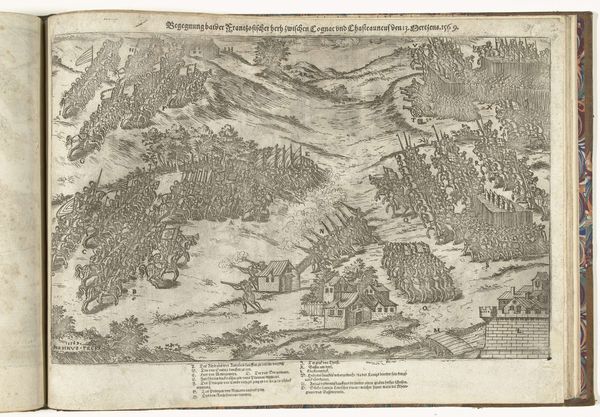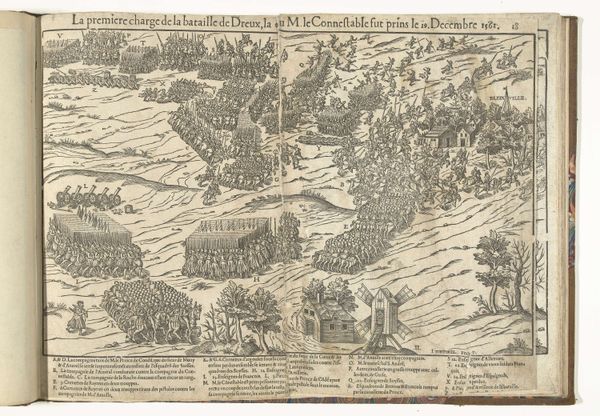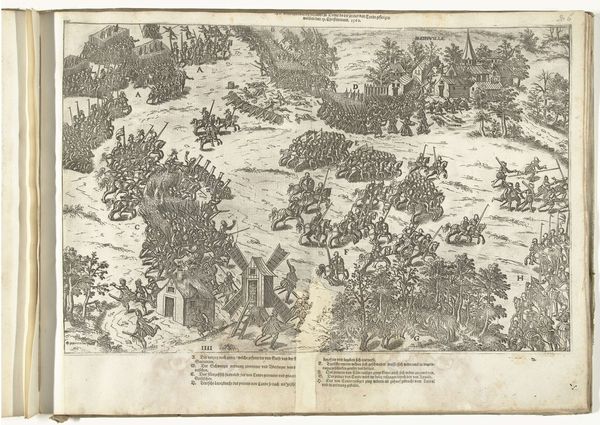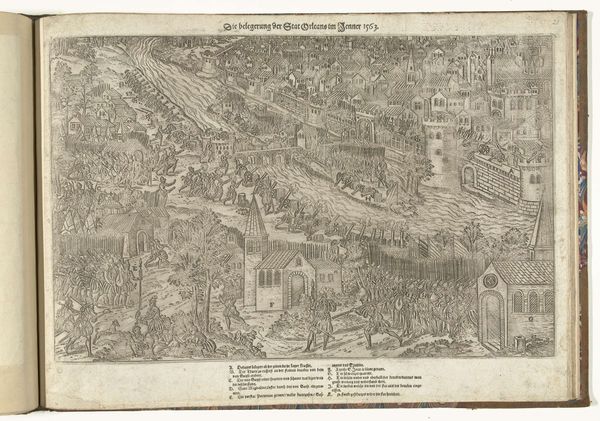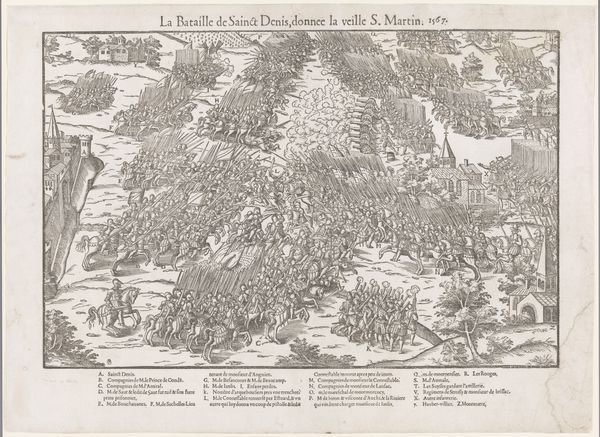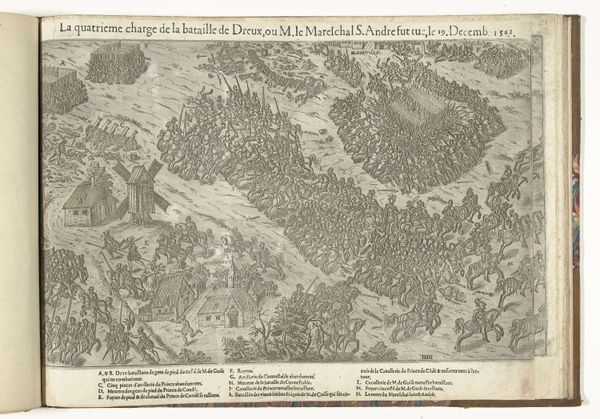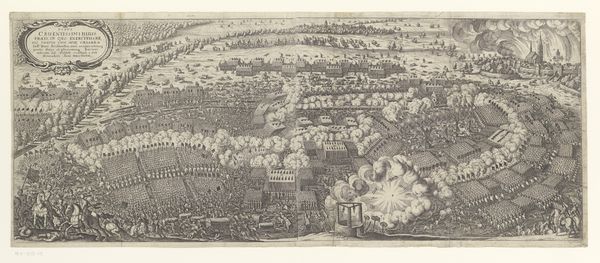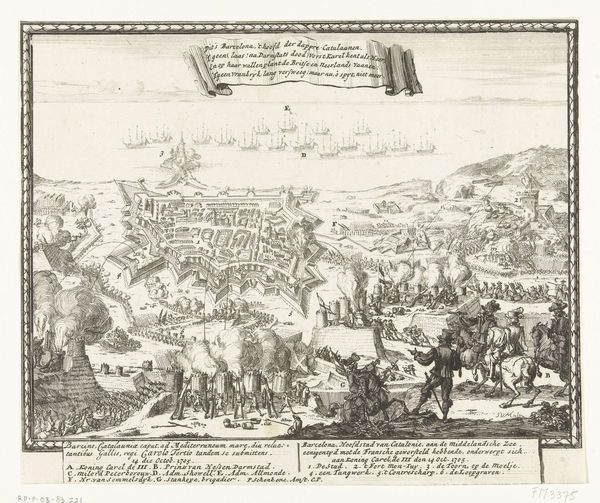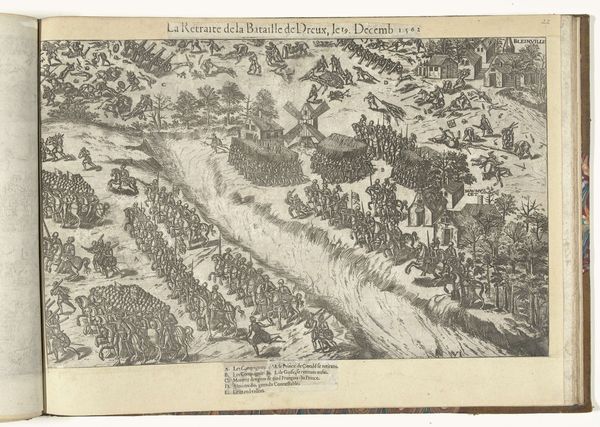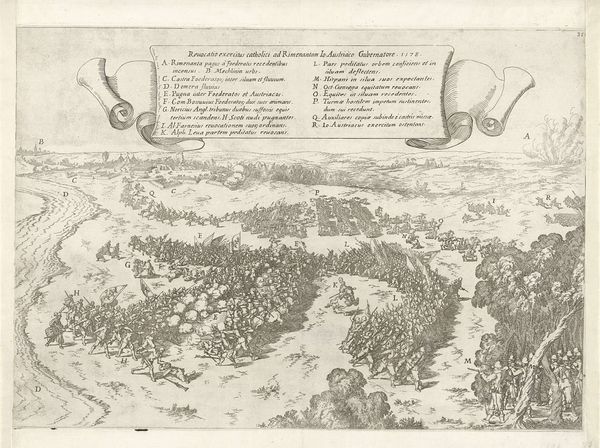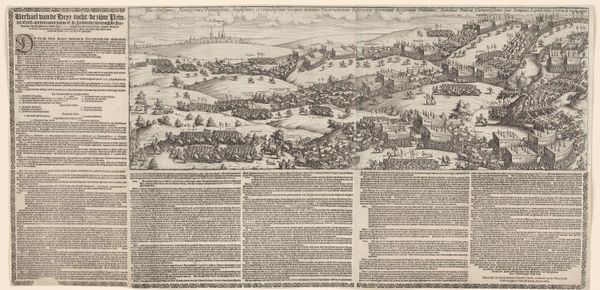
print, engraving
# print
#
landscape
#
mannerism
#
coloured pencil
#
history-painting
#
engraving
Dimensions: height 370 mm, width 490 mm
Copyright: Rijks Museum: Open Domain
Curator: This engraving, dating back to 1570, illustrates "Slagorde van de legers in de slag bij Dreux, 1562," or, "Order of the Armies in the Battle of Dreux" by Jean Perrissin. Editor: My first impression is one of immense detail, and perhaps, detachment. The composition is so comprehensive, depicting the entire field, that the individual human element seems lost. Curator: It's an exercise in power, isn't it? You see how Perrissin maps the organization of forces, and note the legend carefully identifying key leaders and units, almost like a symbolic order affirming hierarchical authority. Consider how such images reinforce social roles. Editor: I can see that, absolutely. There's almost a flattening effect – everything becomes data. And yet, look how Mannerism manifests; notice the subtle elongation of figures and almost decorative arrangement of the troops, it lends a strange artificiality to a real historical moment. Curator: Indeed. This isn't just reportage, but rather a curated view shaped by specific aesthetic and ideological currents. Consider how the 'bird's-eye' perspective and detail amplify the perception of strategic control. I think that contributes directly to the painting's effect and intent. It speaks to how history becomes narrative. Editor: It raises interesting questions about the role of art and images as tools of power. The formal style, I believe, serves to distance us emotionally, while simultaneously impressing upon us the sheer scale and meticulous organization. Curator: It reminds me how historical prints like this circulated widely, not only informing but also shaping public understanding and often, supporting established powers through carefully constructed visual narratives. It becomes more than documentation; it solidifies perception. Editor: Thinking about how people viewed it in the 16th century versus today. I suppose its political impact, if that was a major goal, may be more or less lost to our eye, but what remains, thankfully, is the record of visual thinking and social hierarchy. Curator: Indeed. I think it offers us an opportunity to ponder visual records as potent communicators of social memory and cultural value.
Comments
No comments
Be the first to comment and join the conversation on the ultimate creative platform.
